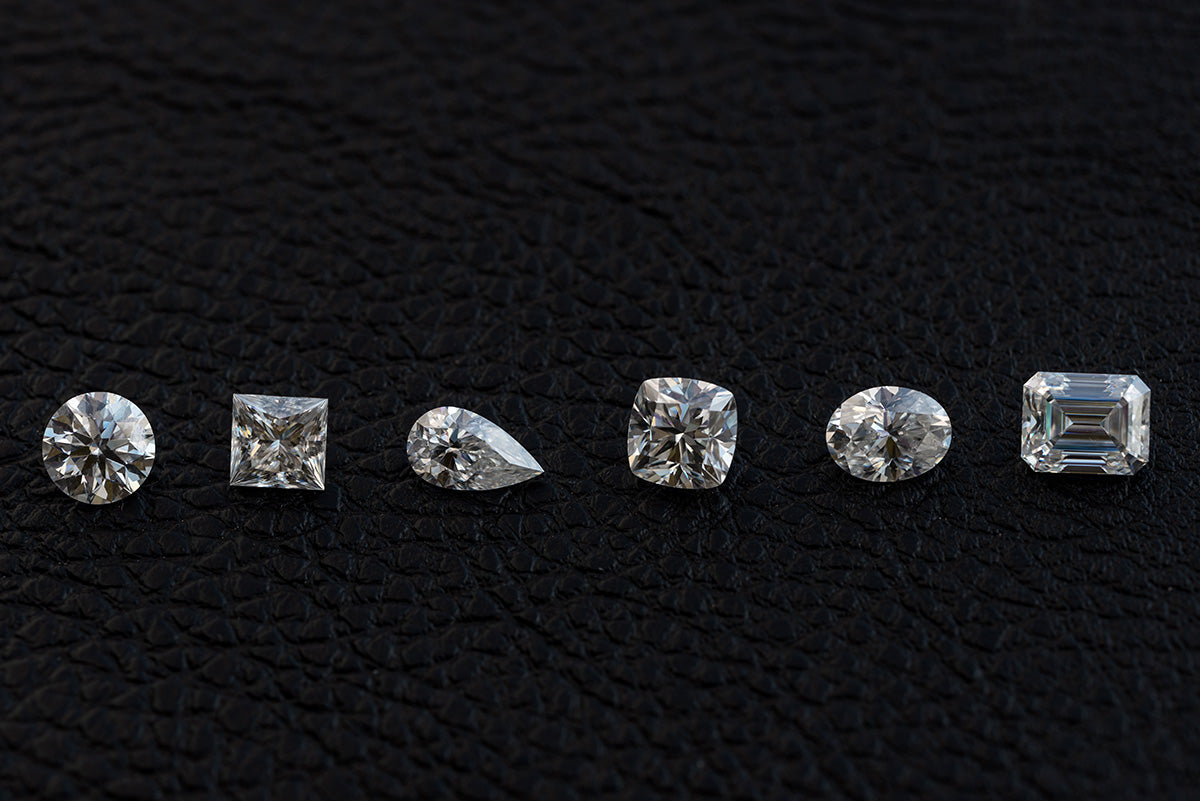An important criterion when buying a diamond is the cut. For the appearance, the cut is one of the most important features and it also plays a major role in the price. Here you will learn everything you need to know about this quality feature and the different cuts. In the series "Quality criteria of a diamond", articles on the evaluation of diamonds regularly appear on our blog.
Evaluation of the cut
First, one must clearly distinguish between the cut as a quality characteristic, for which the precision of cut, polish and symmetry is evaluated, and the cut shape of a diamond, i.e. the geometric shape into which the rough diamond was cut.
The diamond cut as one of the 4 Cs is rated on a five-point scale from excellent cut to poor cut. The quality of the cut is decisive for the light behavior of the diamond, i.e. how it refracts the light. An excellent cut diamond reflects almost all the light that enters it and has maximum brilliance and fire, that is, the rainbow-colored reflection of light. But not only the brilliance and fire are relevant for the evaluation of the cut grade of the diamond. In addition, the distribution of proportions, symmetry and polish are also included in the evaluation, although all these factors also influence each other. Therefore, the combination of these criteria determines the already mentioned light behavior of the diamond, which shows itself to the viewer in the typical sparkle of the gemstone.
How exactly does the light behavior come about?
Decisive for the light behavior, i.e. for the sparkle of a diamond, are the brilliance and the fire. The brilliance describes how much of the incident light is reflected by the diamond. In turn, the proportions of the gemstone, the arrangement of the individual facets and the angular relationships are of great importance. In addition, the combination of specular and reflective facets in the diamond contributes to its sparkle. This creates the visual impression that the diamond is a mixture of white and black facets. The fire of a diamond is the rainbow-colored reflection of light that results from the refraction of white light in the diamond. With a poor cut, the incident light is lost, the typical sparkle is missing, and the diamond appears darker than it actually is.
Cut is key
Of course, the better the rating of its cut, the more expensive the diamond. Nevertheless, it is recommended to choose the diamond with the best possible cut grade within the budget, because this criterion is the most decisive for the appearance. On the one hand, a skillful cut can visually compensate for a lower clarity grade and poorer color grade. This is because by skillfully cutting the gemstone, it is possible to hide inclusions in the diamond and also improve the coloring. On the other hand, an excellent cut can also make the diamond appear visually larger than its carat weight would suggest. You can read more about this in our blog post "Carat" from the series Quality Characteristics of a Diamond.
Diamond shapes
The classic among the diamond shapes is the brilliant. This round shape is the most popular worldwide, over 70% of all rough diamonds are cut into brilliants. Other shapes are mainly used when the raw material can be used more efficiently. This is mainly the case, for example, if the shape of the rough diamond is rather elongated and thus too much of the valuable material would be lost in a round brilliant cut, or if the rough diamond has inclusions at crucial points, which can thus be eliminated. Due to the high demand, however, brilliants are also the most expensive diamonds, at least when it comes to loose diamonds.
Diamond shapes for jewelry
In the case of finished jewelry, however, those set with brilliant-cut diamonds are less expensive than, for example, jewelry with princess cut, emerald or marquise diamonds. This is due to the fact that the offer of fantasy shapes, so-called fancy shapes, is just lower and these cut shapes, unlike the round brilliant, are also not standardized. Therefore, for a finished piece of jewelry, it is much more difficult to find, for example, several diamonds in the princess cut, which match each other in size, clarity and color. Usually, the stones must be adjusted first, so that a harmonious impression is created in the piece of jewelry. Therefore, the production of jewelry with diamonds in fancy shapes is very complex and accordingly more expensive.
Find out more about the common cuts and colors here (fancy shapes and fancy colors).
Image: Adobe Stock | 181832104



Share:
Series "Quality criteria of a diamond": Carat
Precious Metal Guide for Jewelry